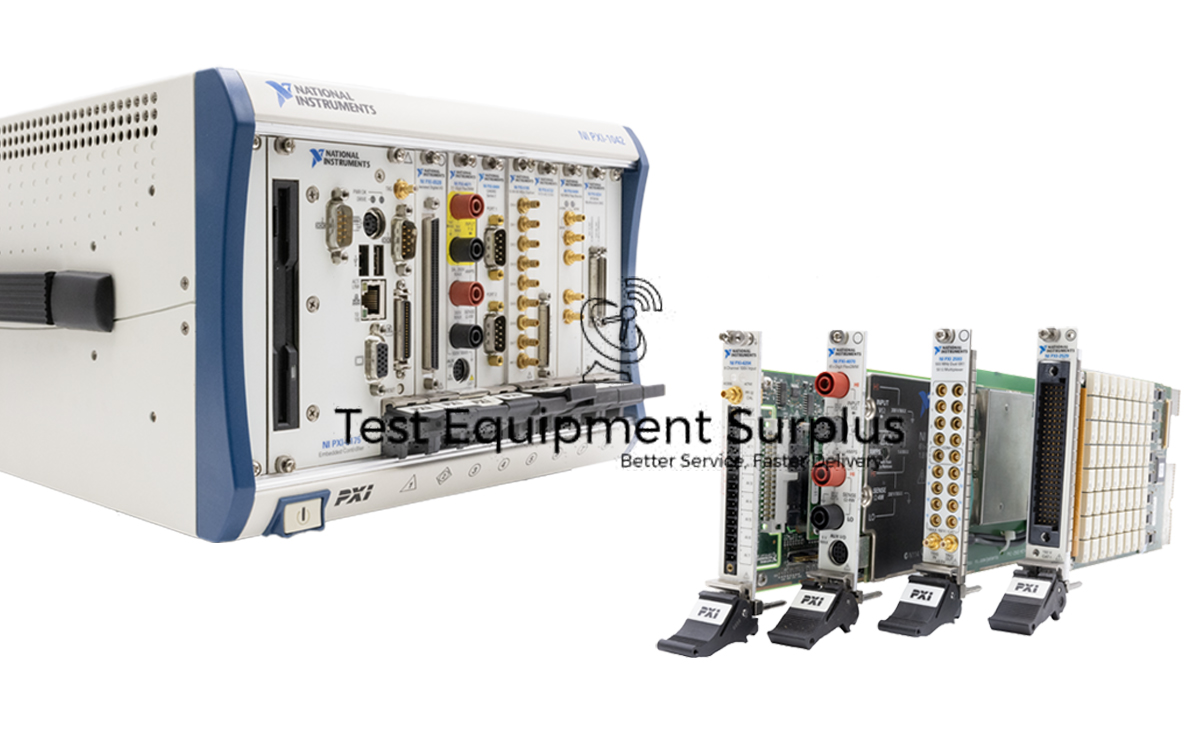Description
The National Instruments PXIe-4322 is a 16-Bit, 8-Channel Analog Output Module with a part number of 782878-01, featuring integrated signal conditioning and channel to channel isolation for enhanced performance. It is equipped with overvoltage protection up to ±120 volts, and it can handle a maximum update rate of 250 kS/s per channel, with both source and sink current capabilities.
The module requires a warm-up time of 15 minutes to ensure accuracy and should be calibrated at least once a year. It offers timing accuracy of 50 ppm of the sample rate and a timing resolution of 10 nanoseconds, with a FIFO buffer capacity of 8,191 samples. Users can utilize various AO waveform modes, including non-periodic and periodic waveforms, which can be regenerated from either the FIFO or host buffer.
Running on NIDAQmx driver software, the module is compatible with application development environments such as LabVIEW and LabWindows/CVI, catering to a range of user needs.
Question 1: What is the maximum overvoltage protection level for the National Instruments PXIe-4322, and what are its calibration requirements?
Answer 1: The FIFO buffer capacity of the National Instruments PXIe-4322 is 8,191 samples, and it supports non-periodic and periodic AO waveform modes.
Question 2: What are the specifications and features of the National Instruments PXIe-4322 16-Bit, 8-Channel Analog Output Module, including its part number, update rate, and required calibration frequency?
Answer 2: The maximum overvoltage protection level for the National Instruments PXIe-4322 is ±120 volts, and it requires calibration at least once a year to ensure accuracy.
Question 3: What are the key features and specifications of the National Instruments PXIe-4322 16-Bit, 8-Channel Analog Output Module, and what software is it compatible with for application development?
Answer 3: The National Instruments PXIe-4322 is a 16-Bit, 8-Channel Analog Output Module with integrated signal conditioning, channel to channel isolation, overvoltage protection up to ±120 volts, and a maximum update rate of 250 kS/s per channel. It requires a 15-minute warm-up time for accuracy, should be calibrated annually, offers timing accuracy of 50 ppm of the sample rate, a timing resolution of 10 nanoseconds, and has a FIFO buffer
Question 4: What is the FIFO buffer capacity of the National Instruments PXIe-4322, and what AO waveform modes does it support?
Answer 4: The National Instruments PXIe-4322 is a 16-Bit, 8-Channel Analog Output Module with part number 782878-01 that offers integrated signal conditioning, channel to channel isolation, overvoltage protection up to ±120 volts, and a maximum update rate of 250 kS/s per channel with source and sink current capabilities. It requires a 15-minute warm-up time for accuracy, calibration at least once a year, provides timing accuracy of 50 ppm of the
Question 5: What are the key features and specifications of the National Instruments PXIe-4322 module including the integrated safety mechanisms and software compatibility?
Answer 5: The National Instruments PXIe-4322 is a 16-Bit, 8-Channel Analog Output Module with the part number 782878-01, which includes integrated signal conditioning and channel to channel isolation, overvoltage protection up to ±120 volts, and a maximum update rate of 250 kS/s per channel. It requires calibration at least once a year to ensure accuracy.
| Feature | Description |
|---|---|
| Part Number | 782878-01 |
| Resolution | 16-Bit |
| Channels | 8-Channel |
| Signal Conditioning | Integrated |
| Isolation | Channel to channel |
| Overvoltage Protection | ±120 volts |
| Maximum Update Rate | 250 kS/s per channel |
| Source and Sink Current Capability | Yes |
| Warm-up Time | 15 minutes for accuracy |
| Calibration Frequency | At least once a year |
| Timing Accuracy | 50 ppm of sample rate |
| Timing Resolution | 10 nanoseconds |
| FIFO Buffer Capacity | 8,191 samples |
| AO Waveform Modes | Non-periodic, Periodic (FIFO or host buffer) |
| Driver Software | NIDAQmx |
| Compatible ADEs | LabVIEW, LabWindows/CVI |
| Weight |





